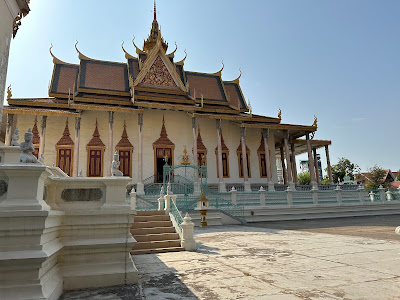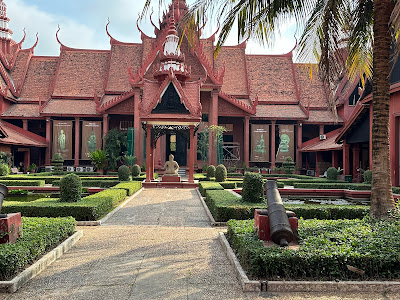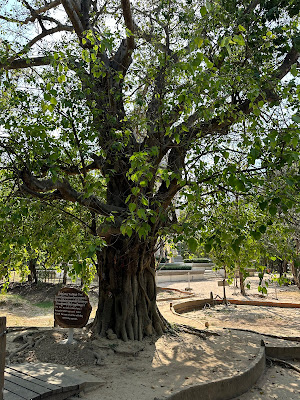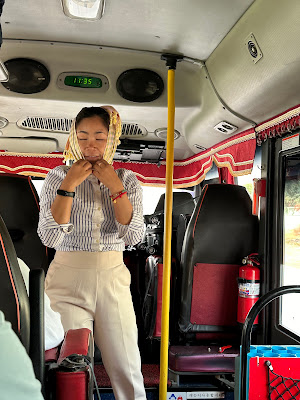My first trip to Cambodia was close to 20 years ago. I remember sitting along the river in Phnom Penh, enjoying a coffee and watching an elephant walk by. Kids were on the streets selling photocopied books about Pol Pot and the genocide. I visited the old prison and the killing fields and was the only person there. All of that has changed.
It is now a bustling city of modern buildings mixed in with traditional monuments. Night time brings out the colourful neon lights along the river although nothing could match HCMC for lights! The traditional sights are now very busy with tourists and locals.
 |
| The bridge lit like the flag |
The Royal Palace is one of those places. Built in 1866 at the end of the French colonial era, it is a huge compound for the Kingdom’s Royal family. Several different buildings fill the space and one is the Silver Pagoda which gets its name from the 5,000 silver tiles lining the floor (mostly covered by carpets) but is also home to a collection of Buddha images. The group of school students were enthusiastically singing a national song.
The National Museum has a wonderful display of artifacts from the Angkor complex. Unfortunately they have lost many of the statues to other countries with France the number country having Cambodian artifacts.
Wat Phnom is a hilltop temple that has great city views. What is really interesting is the mix of Hinduism and Buddhism - this is very accepted by the people although the majority of the country practices Buddhism. Because Chinese and Lunar New Years are just around the corner, we witnessed many people there making their offerings in hopes of having a good next year. Oranges, duck eggs, flowers and yes whole pigs are there for offerings.
Inside the temple itself was a special treat of music because it was Buddha Day - like Sunday church. There were Cambodians inside making offerings and praying and a huge number of Buddha statues.
These were all upbeat and lovely sights to see but the test to one’s emotions came with a visit to two of the most horrific places imaginable. We first visited Toul Sleng. Once a school, it became Pol Pot’s personal torture locations as he attempted to take over the country. Local people describe it as a civil war. Whatever term you use means awful. Walls are covered with victims and horrific pictures of torture. Only 7 people out of 12,000 + suffered in this prison. Altogether over 3 million Cambodians lost their lives during this time. While many were killed after their stay of torture, others died of starvation and disease. Many of these people were the city people forced out of their homes and placed in camps in the jungle.
 |
| The seven survivors |
 |
| One of the two remaining tourists talking to tourists |
About 45 minutes outside of the city is a quiet spot that is almost eerie. This is the location of Choueng Ek Memorial, better known as the Killing Fields. This is only one location of over 400 killing field sites in the country. Seeing the mass graves that held babies and women and decapitated torsos leaves you speechless. And then you enter the stupa where the remains of other 9,000 skulls rest. Many have been identified by age and the way of dying. A common way of killing was just hitting across the neck with a bamboo stick instead of wasting a bullet!
It was another reminder of how cruel war is, how dangerous some men are and how lucky we really are where we live. Unfortunately the world has not learned and the conflict continues.
It was time to move on and after a short stop at the Russian Market we said good bye to our local guide who had presented us each wit a Cambodian scarf and had to show us how to tie it!

























































No comments:
Post a Comment